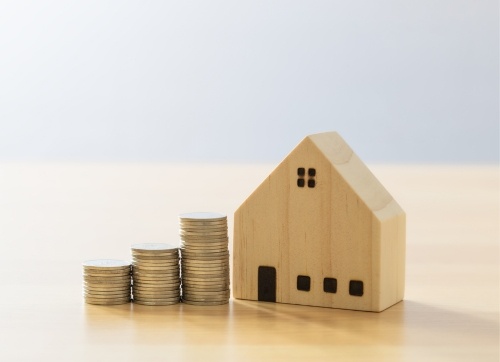3 min read

While the Federal Government’s recent announcement about providing some relief for those with student debt is anticipated to help those with student loans, debt can hold you back financially, so let’s look at some ways to free yourself if debt is becoming a burden.
Debt can be a real drag on your financial goals, getting in the way of saving for a deposit for example. And if you are looking to buy a place, debt is also something a potential lender is going to be interested in.
Let’s look at different types of debt, what they can mean for your purchase plans, and how to take control of your debt.
Types of debt
Let’s start with student loans which have been some of the cheapest and easiest to service loans around, given that repayments are linked to inflation which generally rises slower than wages over time. The higher inflation like we have seen in recent years has changed that, which is why the government has stepped in to cap the rate to be the lower of either the Consumer Price Index or the Wage Price Index. This change will benefit the three million Australians with student debt.i
Of course, student debt is not the only debt you may find yourself saddled with. The most common types of debt are personal loans, credit cards, outstanding bill payments, fines, buy- now-pay-later schemes, and if you have already purchased property, mortgage debt.
The first step to managing your debt is to make a list and ensure you have a clear picture of what you owe.
Good debt and bad debt
The next step is to review the types of debt you have. Not all debt is equal, the kind of debt you incur with an out-of-control credit card is considered bad debt as it is costing you money. On the other hand, good debt has the potential to make you money in the longer term. Like a home loan where you are buying an asset that will grow in value over time.
It can make sense if you have multiple types of debt to focus on paying off the bad debt - and the debt that you are paying the most interest on.
How lenders assess debt
For a lender it’s all about what level of risk you pose when they consider lending you money and how likely you are to keep up your repayments. They assess this by running a serviceability test to review your current debts, liabilities, and credit history against your income to calculate your Debt-to-Income ratio, so paying down debt will help if you are looking to tick the boxes for a loan application.
Paying down debt
It’s a good idea to do a budget to work out how much you can afford to put aside to help pay down your debt. Total up all your monthly spending including the interest you are paying on debt, then include all your income and see what’s left over to pay down debt. If you don’t have anything left after spending, see if there are any areas where you can make cuts to free up some money to attend to your debts.
One popular approach to reduce debt is the snowball method. Just like a snowball rolling down a hill getting bigger and faster as it rolls, the snowball method involves paying off small debts first and builds momentum to pay off larger ones as you go. Make sure you are paying the minimum on all debts due each month though.
If you are feeling really overwhelmed, it can help to chat to a professional for assistance and maybe also consider debt consolidation – rolling your debts into one loan. Some companies promote debt consolidation to make your debts more manageable, promising that your repayment will be lower than your current repayments, but that’s not always the case so you do need to approach with caution.
The tricky thing with debt is that it’s easy for it to grow and can get out of hand particularly as interest rates have increased, so any steps you can take today to get up top of your debt will help set you up for a fantastic financial future.
i https://ministers.education.gov.au/clare/cutting-student-debt-more-three-million-australians
Call us to today!




